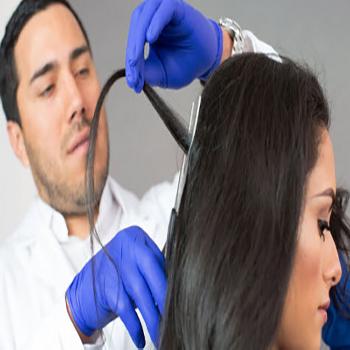The 5-Panel Hair Drug Test Plus Expanded Opiates detects drug use by analyzing hair samples, where drugs and their metabolites are deposited as the hair grows through exposure to blood, sweat, and skin oils. Key features of this test include:
Detection Window: Most drugs are detectable in head hair starting at 7 days after use and can extend up to 90 days if the hair sample is at least 1.5 inches in length. A confirmed positive result indicates use or exposure during this time period. Note that body hair does not grow at the same rate as head hair, resulting in a less precise detection window.
Substances Tested: This test screens for the following drugs and their metabolites:
- Amphetamines (including Ecstasy)
- Cocaine
- Expanded Opiates, including:
- Morphine
- Codeine
- Hydrocodone
- Hydromorphone
- Oxycodone
- Oxymorphone
- 6-acetylmorphine (heroin)
- Marijuana
- Phencyclidine (PCP)
The 5-Panel Hair Drug Test Plus Expanded Opiates is suitable for pre-employment screenings, ongoing employee monitoring, and post-incident evaluations, helping organizations maintain a safe and drug-free workplace.
Why would I need this test?
The 5-Panel Hair Drug Test + Expanded Opiates is used to detect long-term drug use, covering a period of up to 90 days, and includes an expanded panel for opiates. This test is ideal for:
Pre-employment screenings, especially for safety-sensitive or regulated industries that require detailed drug testing.
Random or routine workplace testing to monitor compliance with drug-free policies.
Court-ordered or legal testing in cases involving custody, probation, or legal disputes.
Rehabilitation or treatment programs to monitor long-term abstinence and recovery progress.
Post-accident testing when drug use could be a factor in workplace safety incidents.
This test provides a comprehensive view of long-term drug use, including a broader range of opiates beyond standard opiates.
Will over-the-counter or prescription medications affect the test results?
Yes, certain prescription medications may affect the results if they contain substances similar to the drugs tested for, including expanded opiates. For example:
Prescription opioids (e.g., oxycodone, hydrocodone) may appear in the test.
Amphetamines prescribed for ADHD could also show up.
Benzodiazepines for anxiety treatment may be detected.
It’s important to disclose all medications you are taking to the testing administrator to ensure accurate interpretation of the results.
How is the sample collected for the test?
The hair collection process is simple and non-invasive:
A small hair sample, about 1.5 inches long and the width of a pencil, is cut close to the scalp.
If there isn’t enough head hair, body hair (from areas like the chest, arms, or legs) may be used as an alternative.
The sample is sent to a laboratory for analysis. The test screens for 5 major drug classes and includes an expanded range of opiates such as:
Marijuana
Cocaine
Amphetamines (including methamphetamine and MDMA)
Phencyclidine (PCP)
Opiates (expanded to include oxycodone, hydrocodone, hydromorphone, and oxymorphone in addition to heroin, morphine, and codeine)
How far back does the test detect drug use?
Hair drug tests can detect drug use for up to 90 days. The test analyzes the hair closest to the scalp, representing roughly three months of drug use history, as hair grows at an average rate of half an inch per month.
